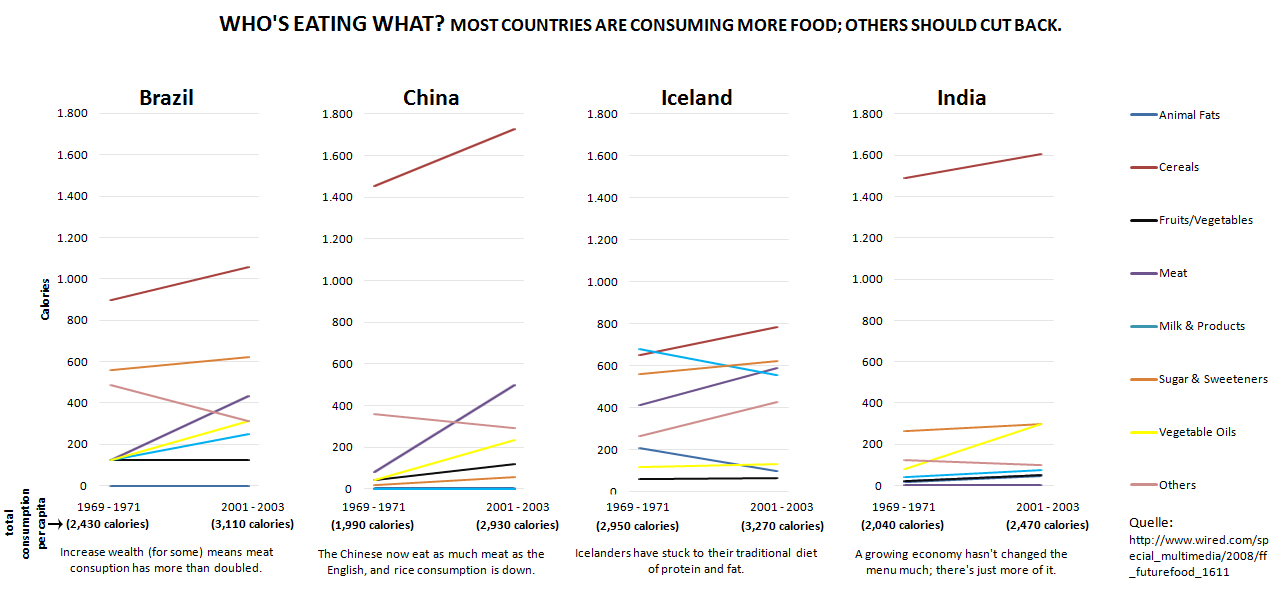Teaching:TUW - UE InfoVis WS 2009/10 - Gruppe 03 - Aufgabe 3
Jump to navigation
Jump to search
Aufgabenstellung
Zu verbessernde Grafik
Grafik: Link
critics
- 'no data ink'-ratio too high (e.g. black background)
- colors used in diagrams are not distinctive enough
- red and green is used -> may be a problem because of color blindness
- contrast foreground – background is too low
- headlines shouldn’t draw attention away from (important) graphs
- rotated text shouldn’t be used
- diagrams aren’t exactly meaningful -> no exact values given, e.g. percentage
- diagrams should be re-built to make them better readable -> meaningful sequence e.g. “left to right”, “top to bottom”
- are all categories shown in the graphs are needed to convey the message?
- WHEN, WHO, WHERE should be considered in diagrams
improvements made
- we removed the black background and the background from the headline. although it makes sense in the design of the entire page, looked at it seperatly its not necessary.
- the basic design of the table was changed (from a circle diagram) to a line diagram with years as one dimension, calories as the other dimension, the different types of food as categories:
- percent -> values: in the circle the values are shown in percentage of the circle (the amount was shown in the size of the diagram). now we use the absolute numbers comparing them over the years in a
- line diagram which makes it much easier to see the in-/decrease of the values.
- this also brings a reduction of a diagram for each county.
- as the new diagrams only contain 2 values each on the horizontal axis, its possible to make them relative small and
- align all the diagrams in one line from the left to the right. because the values are shown on the vertical axes which were
- normed to a maximum value over all countries. this even allows to campare the values between the countries.
- additional decoration like the bar in the middle of the old graphic are not necessary to express the data and thus were omitted.
- the categories have no natural order, so we ordered them alphabetically, except the category 'other' which is the least meaningful compared to the others and so listed last.
- the text next to the diagrams was removed, because it refered to the article, not to the diagrams themselfes which is more confusing then helping.
- we added a reference to the source of the data used in the diagram.
